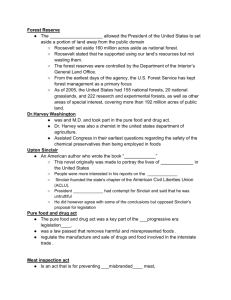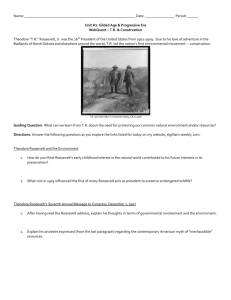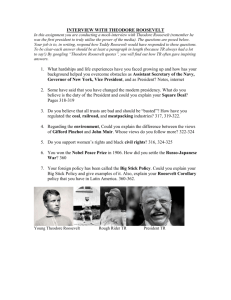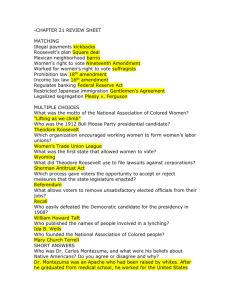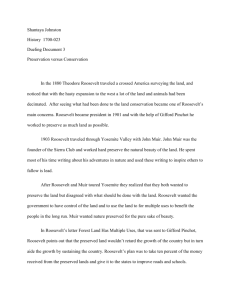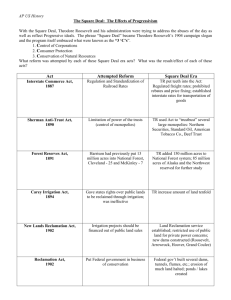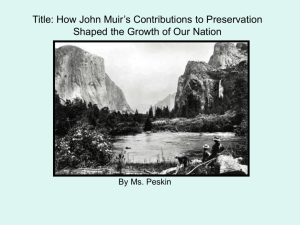Conservation & Preservation: Teddy Roosevelt
advertisement
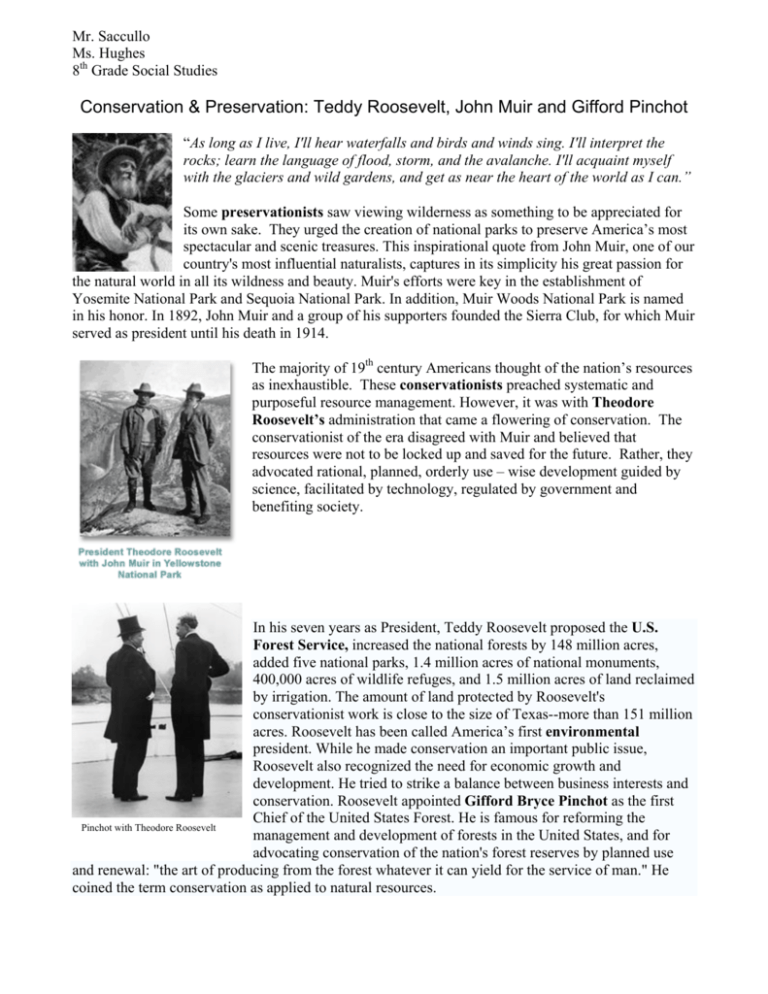
Mr. Saccullo Ms. Hughes 8th Grade Social Studies Conservation & Preservation: Teddy Roosevelt, John Muir and Gifford Pinchot “As long as I live, I'll hear waterfalls and birds and winds sing. I'll interpret the rocks; learn the language of flood, storm, and the avalanche. I'll acquaint myself with the glaciers and wild gardens, and get as near the heart of the world as I can.” Some preservationists saw viewing wilderness as something to be appreciated for its own sake. They urged the creation of national parks to preserve America’s most spectacular and scenic treasures. This inspirational quote from John Muir, one of our country's most influential naturalists, captures in its simplicity his great passion for the natural world in all its wildness and beauty. Muir's efforts were key in the establishment of Yosemite National Park and Sequoia National Park. In addition, Muir Woods National Park is named in his honor. In 1892, John Muir and a group of his supporters founded the Sierra Club, for which Muir served as president until his death in 1914. The majority of 19th century Americans thought of the nation’s resources as inexhaustible. These conservationists preached systematic and purposeful resource management. However, it was with Theodore Roosevelt’s administration that came a flowering of conservation. The conservationist of the era disagreed with Muir and believed that resources were not to be locked up and saved for the future. Rather, they advocated rational, planned, orderly use – wise development guided by science, facilitated by technology, regulated by government and benefiting society. In his seven years as President, Teddy Roosevelt proposed the U.S. Forest Service, increased the national forests by 148 million acres, added five national parks, 1.4 million acres of national monuments, 400,000 acres of wildlife refuges, and 1.5 million acres of land reclaimed by irrigation. The amount of land protected by Roosevelt's conservationist work is close to the size of Texas--more than 151 million acres. Roosevelt has been called America’s first environmental president. While he made conservation an important public issue, Roosevelt also recognized the need for economic growth and development. He tried to strike a balance between business interests and conservation. Roosevelt appointed Gifford Bryce Pinchot as the first Chief of the United States Forest. He is famous for reforming the Pinchot with Theodore Roosevelt management and development of forests in the United States, and for advocating conservation of the nation's forest reserves by planned use and renewal: "the art of producing from the forest whatever it can yield for the service of man." He coined the term conservation as applied to natural resources.
